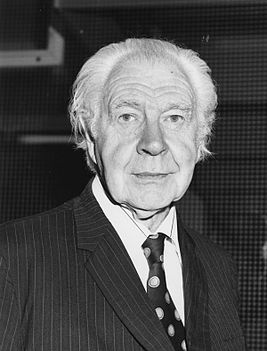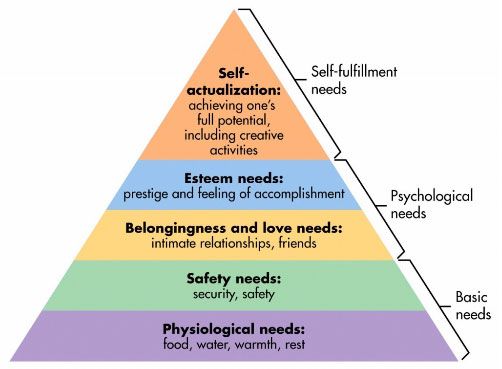Work
 Lionel Charles Robbins, Baron Robbins
|
Экономическая наука – это наука, изучающая человеческое поведение с точки зрения соотношения между целями и ограниченными средствами, которые могут иметь различное употребление.
https://ru.wikipedia.org/wiki/%D0%A0%D0%BE%D0%B1% D0%B1%D0%B8%D0%BD%D1%81,_%D0%9B%D0%B0% D0%B9%D0%BE%D0%BD%D0%B5%D0%BB
http://seinst.ru/page712/
http://www.studylecturenotes.com/management-sciences/economics/78-lionel-robbinsbaron-robbins
https://en.wikipedia.org/wiki/Lionel_Robbins
https://tvhe.wordpress.com/2008/10/26/quote-5-lionel-robbins-definition-of-economics/
http://www.econlib.org/library/Enc/bios/Robbins.html !!!
|
1 My article
My piece of text
Personality
Site, forum
Book or article
Geo:WorldMY TEXTS + MY PROGRAMMS
|
Work
Economics (UK English: /iːkəˈnɒmɪks/, /ɛkəˈnɒmɪks/;[1] US English: /ɛkəˈnɑːmɪks/, /ikəˈnɑːmɪks/[2][3]) is "a social science concerned chiefly with description and analysis of the production, distribution, and consumption of goods and services" according to the Merriam-Webster Dictionary.[2] The discipline was renamed in the late 19th century primarily due to Alfred Marshall from "political economy" to "economics" as a shorter term for "economic science" at a time when it became more open to rigorous thinking and made increased use of mathematics, which helped support efforts to have it accepted as a science and as a separate discipline outside of political science and other social sciences.[4][5][6][7]
Economics focuses on the behaviour and interactions of economic agents and how economies work. Consistent with this focus, textbooks often distinguish between microeconomics and macroeconomics. Microeconomics examines the behaviour of basic elements in the economy, including individual agents and markets, their interactions, and the outcomes of interactions. Individual agents may include, for example, households, firms, buyers, and sellers. Macroeconomics analyzes the entire economy (meaning aggregated production, consumption, savings, and investment) and issues affecting it, including unemployment of resources (labour, capital, and land), inflation, economic growth, and the public policies that address these issues (monetary, fiscal, and other policies).
|
Other broad distinctions within economics include those between positive economics, describing "what is", and normative economics, advocating "what ought to be"; between economic theory and applied economics; between rational and behavioural economics; and between mainstream economics and heterodox economics.[8]
Economic analysis can be applied throughout society, as in business, finance, health care, and government. Economic analyses may also be applied to such diverse subjects as crime,[9] education,[10] the family, law, politics, religion,[11] social institutions, war,[12] science,[13] and the environment.[14] Education, for example, requires time, effort, and expenses, plus the foregone income and experience, yet these losses can be weighted against future benefits education may bring to the agent or the economy. At the turn of the 21st century, the expanding domain of economics in the social sciences has been described as economic imperialism.[15] The ultimate goal of economics is to improve the living conditions of people in their everyday life.[16]
|
My piece of text
Geo:WorldMY TEXTS + MY PROGRAMMS Lessons
|
Work
http://www.businessdictionary.com/definition/independent-enterprise.html
http://dictionary.cambridge.org/dictionary/english/enterprise
Enterprise is an independent subject which has rights of legal entity and carries out production, research and commercial activities with the purpose to receive the income ( the profit).
Предприятие является самостоятельным субъектом, который имеет права юридического лица и осуществляет производство, исследовательской и коммерческой деятельности с целью получения дохода (прибыли).
|
My piece of text
Geo:WorldMY TEXTS + MY PROGRAMMS Lessons
|
Work
 Maslow Pyramid
|
Maslow's (1943, 1954) hierarchy of needs is a motivational theory in psychology comprising a five tier model of human needs, often depicted as hierarchical levels within a pyramid.
Maslow wanted to understand what motivates people. He believed that people possess a set of motivation systems unrelated to rewards or unconscious desires.
Maslow (1943) stated that people are motivated to achieve certain needs and that some needs take precedence over others. Our most basic need is for physical survival, and this will be the first thing that motivates our behaviour. Once that level is fulfilled the next level up is what motivates us, and so on.
maslow's hierarchy of needs five stage pyramide
This five stage model can be divided into deficiency needs and growth needs. The first four levels are often referred to as deficiency needs (D-needs), and the top level is known as growth or being needs (B-needs).
The deficiency needs are said to motivate people when they are unmet. Also, the need to fulfil such needs will become stronger the longer the duration they are denied. For example, the longer a person goes without food, the more hungry they will become.
|
One must satisfy lower level deficit needs before progressing on to meet higher level growth needs. When a deficit need has been satisfied it will go away, and our activities become habitually directed towards meeting the next set of needs that we have yet to satisfy. These then become our salient needs. However, growth needs continue to be felt and may even become stronger once they have been engaged. Once these growth needs have been reasonably satisfied, one may be able to reach the highest level called self-actualization.
Every person is capable and has the desire to move up the hierarchy toward a level of self-actualization. Unfortunately, progress is often disrupted by a failure to meet lower level needs.
Life experiences, including divorce and loss of a job may cause an individual to fluctuate between levels of the hierarchy. Therefore, not everyone will move through the hierarchy in a uni-directional manner but may move back and forth between the different types of needs.
Maslow noted only one in a hundred people become fully self-actualized because our society rewards motivation primarily based on esteem, love and other social needs.
The original hierarchy of needs five-stage model includes:
1. Biological and Physiological needs - air, food, drink, shelter, warmth, sex, sleep.
2. Safety needs - protection from elements, security, order, law, stability, freedom from fear.
3. Love and belongingness needs - friendship, intimacy, trust and acceptance, receiving and giving affection and love. Affiliating, being part of a group (family, friends, work).
4. Esteem needs - achievement, mastery, independence, status, dominance, prestige, self-respect, respect from others.
5. Self-Actualization needs - realizing personal potential, self-fulfillment, seeking personal growth and peak experiences.
|
Lessons and other Education
My piece of text
Geo:WorldMY TEXTS + MY PROGRAMMS Lessons
|
Work
Definition: A market economy is when competition from free enterprise makes economic decisions. It allows the laws of supply and demand to direct the production of goods and services. Supply includes natural resources, capital, and labor. Demand includes purchases by consumers, businesses and the government.
Producers sell their wares at the highest price consumers will pay. At the same time, shoppers look for the lowest prices for the goods and services they want.
Workers bid their services at the highest possible wages that their skills allow. Employers seek to get the best employees at the lowest possible price.
Capitalism requires a market economy to set prices and distribute goods and services. Socialism and communism use a command economy to set a central plan. Market economies evolve from traditional economies. Most societies in the modern world have elements of all three types of economies. That makes them mixed economies.
Six Characteristics of a Market Economy
Four Market Economy Advantages
|
Four Market Economy Disadvantages
The key mechanism of a market economy is competition. As a result, it has no system to care for those who are at an inherent competitive disadvantage. That includes the elderly, children and people with mental or physical disabilities.
Second, the caretakers of those people are also at a disadvantage. Their energies and skills go toward caretaking, not competing. Many of these people might become contributors to the economy's overall comparative advantage if they weren't caretakers.
That leads to the third disadvantage. The human resources of the society may not be optimized. For example, a child who might otherwise discover the cure for cancer might instead work at McDonald's to support her low-income family.
Fourth, the society reflects the values of the winners in the market economy. That's why a market economy may produce private jets for some while others starve and are homeless. A society based on a pure market economy must decide whether it's in its larger self-interest to care for the vulnerable. If it decides it is, the society will grant the government a significant role in redistributing resources. That’s why there are so many mixed economies. Most so-called market economies are mixed economies. (Source: Louis Putterman, Markets vs. Controls, Brown University.)
Market Economy Examples
|
My piece of text
Geo:WorldMY TEXTS + MY PROGRAMMS Lessons
|
Work
Lessons and other Education
Geo:WorldLink
|
|